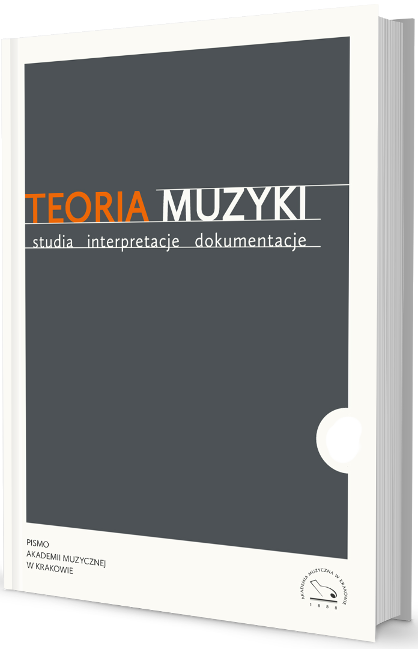Droga do Pleromy : język harmoniczny
późnego Skriabina
The Path to Pleroma: the Harmonic Language of Late Scriabin
Author(s): Levon AkopianSubject(s): Music
Published by: Akademia Muzyczna w Krakowie im. Krzysztofa Pendereckiego
Keywords: 10.26377/22998454tm.15.6.002
Summary/Abstract: The harmonic language of late Scriabin is considered in terms of the category ‘harmonic field’, which seems to be an appropriate metaphor for his mature perception of harmony. The term ‘harmonic field’ is to be understood as a set of relationships between classes of sound pitches (or, in particular instances, a chord with a specific structure) dominating within one musical entity or fragment and thus defining its harmonic colouring. The stylistic evolution of Scriabin gradually led him to approach harmony as a certain type of field – a balanced set of properties, whose constant (although perhaps not always observable in the same way) presence provides the musical space with a high degree of homogeneity. This approach leads directly to Scriabin’s definition of harmony and melody as two aspects of the same entity (‘Melody is harmony distributed in time, whereas harmony is a “condensed” melody’).In Prometheus (1908-10), the so-called Promethean chord, reduced to the structure [0, 2, 4, 6, 9, 10], fulfils the function of a harmonic field for the whole composition, defining the qualities of all vertical and horizontal structures and supplying the musical fabric with an unusually high level of uniformity. Scriabin himself referred to this structure as ‘the Pleroma chord’ (from Greek πλήρωμα fullness), with regard to the concept of the fullness of cosmic existence. The plenitude of sound characteristic of a Promethean chord is defined so that the chord’s five tones, creating a whole-tone scale, are supplemented by a single foreign tone; the Promethean hexachord corresponds to the 8, 9, 10, 11, 13, and 14 tones in a natural scale.The harmonic field category is also significant in Scriabin’s later compositions, including Sonatas Nos. 6, 7, and 8. In some works (especially in the piano poem Towards the Flame, 1914) the concept of Pleroma as a transcendental entity, achievable through superhuman effort, is materialised in a structure even more comprehensive than a Promethean chord [0, 2, 4, 6, 7, 9, 10]; in this hexachord, the 12th tone of the natural scale is used as well as omitted.
Journal: Teoria Muzyki. Studia, Interpretacje, Dokumentacje
- Issue Year: III/2015
- Issue No: 6
- Page Range: 27-55
- Page Count: 30
- Language: Polish

